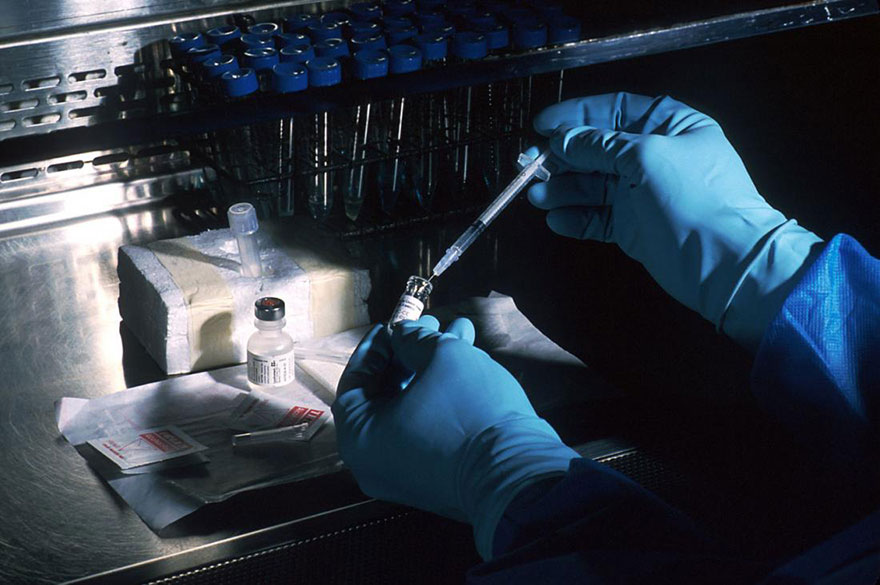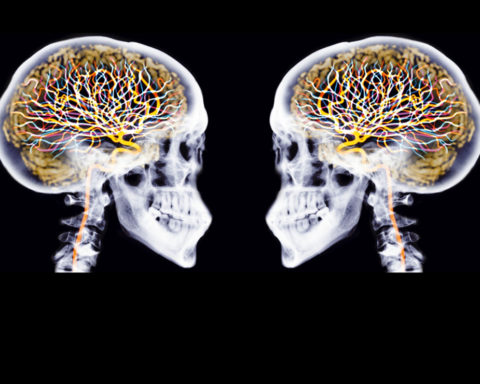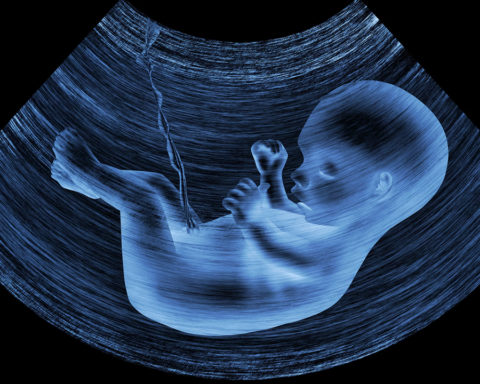Let us not celebrate victory too soon and let us not raise undue hopes. The long-awaited cancer vaccine is not going to be on the pharmacy shelves tomorrow morning. But researchers at Stanford University have completed some very promising experiments that they have just published. Their work has looked at different types of cancer in mice and the results are impressive. In some cases, the success rate of the drug is 98 %. Human clinical trials in lymphoma patients are currently underway.
Ronald Levy and Idit Sagiv-Barfi are the two scientists who led the research at Stanford University School of Medicine.. We will have to remember their names because they may be on the verge of a fundamental discovery. They came up with the idea of injecting minute amounts of two immunostimulants directly into solid tumours in mice. The goal is to stimulate the activation of T-cells in the tumours. The results exceeded their expectations because not only does this treatment eliminate all traces of cancer in the animals, but it also eliminates distant metastases that are not directly treated.
Effects throughout the body
" When we use these two agents together, we see the elimination of tumours throughout the body... "said principal investigator, oncologist Ronald Levy. « This approach circumvents the need to identify tumor-specific immune targets and does not require full activation of the immune system, or personalization of a patient's immune cells. " he added.
Accuracy is important. Doctors know that cancer treatments using immunotherapy are very delicate. Because cancer cells are produced by the body, the immune system does not see them as a threat. When an agent from outside the body, such as a virus, is involved, the immune system immediately kicks in. But in cancer, immune cells are inoperable. Some treatments involve teaching the immune cells to recognize that cancer cells are not healthy and therefore destroy them. This area of research is relatively effective but very cumbersome because it often involves removing immune cells from the patient's body, genetically manipulating them, and then injecting them back into the body. A long and costly process.
The Stanford Physicians' Approach, published January 31 in the journal Science Translationnal Medicineis very different. It involves injecting the treatment directly into the sites affected by the cancer. « Our approach uses a unique application of very small amounts of two distinct agents to stimulate immune cells only within the tumor itself. In mice, we have observed incredible effects on the whole body, including tumour elimination in the whole animal. ", says Dr. Levy.
Mission: Cancer destruction
The treatment, which is similar to a vaccine, exploits a particular feature of the immune system. When a tumour develops, the cells of the immune system - the T cells, especially the T lymphocytes, which play an important role in the immune response - recognize the abnormal proteins in the cancer cells. They immediately begin to eradicate them. But cancer cells gradually learn from these attacks and make mutations that allow them to avoid destroying the T cells that attack them.

Professor Ronald Levy
Professors Levy and Sagiv-Barfi's vaccine works by reactivating T cells. It does this by combining two agents: the first is a short piece of DNA, called a CpG oligonucleotide. Used in conjunction with other nearby immune cells, it amplifies the expression of a T-cell activating receptor called OX40, which is a member of the tumour necrosis factor receptor superfamily. The second agent is an antibody that binds to OX40, activating T cells to fight cancer cells. These two agents are injected together in small amounts, on the order of a microgram - a microgram is one millionth of a gram - directly into the tumour. This detail is important because it means that this treatment targets the T cells in the tumour, which have already recognized the cancer cells as a threat. Once reactivated, these T cells are able to remove the tumour. But once this work is complete, these cells will look elsewhere in the body for other cancer cells of the same nature.
The experiments were conducted on laboratory mice to which doctors transplanted lymphoma at two different sites. The results speak for themselves: of the 90 mice with lymphoma, 87 cured completely. What's more, the treatment was injected into only one of the tumours, but both were completely destroyed. Three of the mice had a recurrence of the lymphoma, which could be completely eliminated after a second treatment.
Similar results were observed in mice with breast, colon and melanoma tumours. « I don't think there's a limit to the type of tumor we could potentially treat, as long as it's infiltrated the immune system... ", says Professor Levy.
His optimism is to be taken seriously because this doctor is a pioneer in the field of cancer immunotherapy, where researchers are trying to harness the immune system to fight cancer. Research in his laboratory has led to the development of the rituximabone of the first monoclonal antibodies approved for the treatment of cancer in humans.
The effectiveness of this new treatment will now be tested on humans. The clinical trial plans to recruit 15 human patients with low-grade lymphoma to determine if the treatment is effective in humans. If it proves effective, then it could be used in the future to fight and eradicate tumours before they are surgically removed from the body to help prevent metastases, or even just prevent cancer recurrence.
A little more patience. The cancer vaccine is on the right track.

Source : Stanford University












